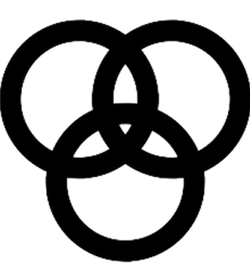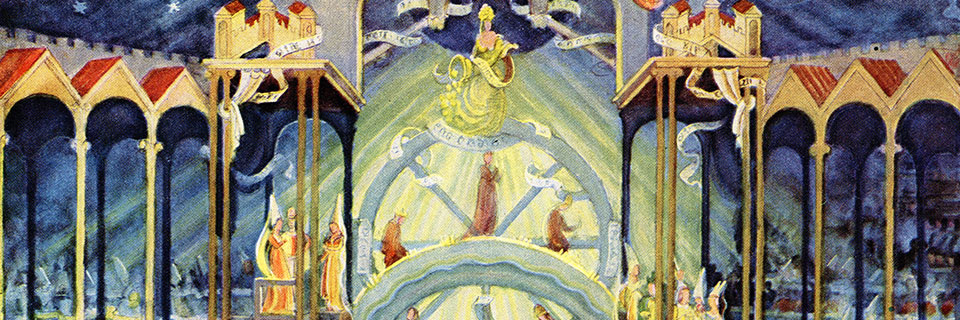Prime Pantheon
The Prime Pantheon includes the ethnic religions of ancient Carcino that the Carcinians used to define themselves as a people, as well as the religious practices of peoples brought under Carcinian rule, in so far as they became widely followed in Carcino and the Dalelands. Carcinian's think of themselves as highly religious, and attributed their success as a world power to their collective piety in maintaining good relations with the gods. It also includes the ethnic religions of ancient Tarrin and the Druids of the Lowlands. Thus the Dalelands are known for a great number of deities they honored.
The presence of Dwarfs on the Terauri Peninsula from the beginning of the historical period influenced Carcinian culture, introducing some religious practices that became as fundamental as the cult of Abbathor who would eventually become the Carcinian deity of Waukeen. This would be a similar case for the people of the Highlands and Lowlands considering the closeness of the elves and their vast forest empire. The highlandsers looked for common ground between their major gods and those of the Elven iconography of the druidic cult, where as Carcinians looked for iconography in the dwarven literature and art.
The Dalelands religion, like the DalePact itself, is a practical and contractual one, based on the principle of "do ut des" ("I give that you might give"). To the people of the Dales, religion depended on knowledge and the correct practice of prayer, ritual, and/or, sacrifice, not on faith or dogma, although Carcinian literature preserves learned speculation on the nature of the divine and its relation to human affairs. Even the most skeptical among the Dales intellectual elite see religion as a source of social order. As the Dalelands expanded, migrants to the Dales brought their local cults, many of which became popular among great cities and even the capitals themselves.
For ordinary citizens, religion was a part of daily life. Each home had a household shrine at which prayers and libations to the family's domestic deities were offered. Neighborhood shrines and sacred places such as springs and groves can be found dotted around cities, while towns and villages might have just one. The Dale calendar was structured around religious observances. All people participated in a range of religious actives. Some public rituals could only be performed by women, and women formed what is perhaps Carcino's most famous priesthood, the state-supported Selûnites, who tended the city sacred fire for centuries.
Overview
The priesthoods of public religion were held by members of the elite classes. There was no principle analogous to the separation of church and state in the Dalelands. During the Carcinian Republic, the same men who were elected public officials might also serve as augurs and pontiffs. Priests married, raised families, and led politically active lives. Euclid Eurythenes became Pontifex Maximus before he was elected Consul. The augurs read the will of the gods and supervised the marking of boundaries as a reflection of universal order, thus sanctioning Daleland expansionism as a matter of divine destiny. As the humans extended their dominance throughout the western world, their policy, in general, was to absorb the deities and cults of other peoples rather than try to eradicate them, since they believed that preserving tradition promoted social stability. One way that the Dales incorporated diverse peoples was by supporting their religious heritage, building temples to local deities that framed their theology within the hierarchy of human religion. Inscriptions throughout the Empire record the side-by-side worship of local and Prime deities, including dedications made by citizens to local gods.Human Deities
The Dalelands offers no native creation myth, and little mythography to explain the character of its deities, their mutual relationships, or their interactions with the human world, but Carcinian theology acknowledged that 'di immortales' (immortal gods) ruled all realms of the heavens and earth. There were gods of the upper heavens, gods of the underworld, and a myriad of lesser deities between. Some evidently favored the Dalelands because the Dales honored them, but none were intrinsically, irredeemably foreign, or alien. The political, cultural, and religious coherence of an emergent Dales super-state required a broad, inclusive, and flexible network of lawful cults. At different times and in different places, the sphere of influence, character, and functions of a divine being could expand, overlap with those of others, and be redefined as part of the Prime. The change was embedded within existing traditions. Several versions of a semi-official, structured pantheon were developed during the political, social, and religious instability of the Late Republican era.Membership
The Prime pantheon is a pantheon of deities. Pantheons are a group of deities who are worshiped by people who share one characteristic, for example sharing the same cultural or racial background. In the Prime pantheon's case, the believers' shared characteristic was a geographic one. In the years after its creation, many new deities and pantheons have joined the Prime pantheon as various outer circles. Much of the doctrine rarely changes for these outer circles like Druidism and the Gnomish pantheon.Hierarchy
The Inner Circle are the major deities who lead the pantheon and hold the biggest sway over the peoples of the Dalelands. Apart from this distinction, there is little hierarchy in the Prime pantheon. A unique trait of the Prime pantheon is that deities with similar portfolios were clustered in a hierarchic relationship. This decision was made by the Carcinian people in the early ages of the pantheon, for they did not know if the lesser deities were just aspects of a greater all-encompassing deity, or if there was some power structure to the gods that mortals didn't understand.
do ut des, "I give that you might give"
Founding Date
c. 1002 Ancient Era
Type
Religious, Pantheon
Capital
Training Level
Professional
Veterancy Level
Decorated/Honored
Leader Title
Economic System
Mixed economy
Subsidiary Organizations
Permeated Organizations
Divines
Location
Notable Members
Related Species
Remove these ads. Join the Worldbuilders Guild









Comments